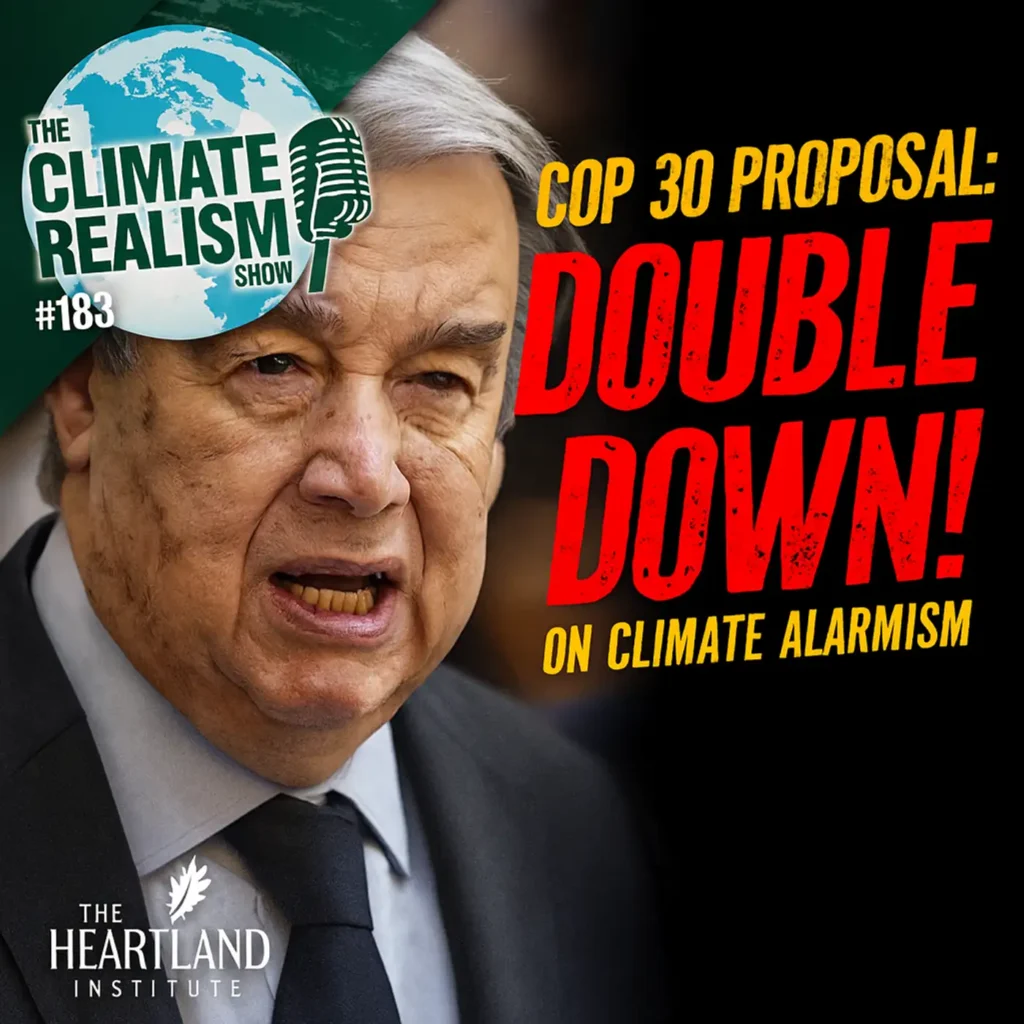The Clinton administration contends that the science of global warming is “settled,” and dangerous climate change from carbon dioxide produced by burning coal and oil is no longer a theory but a “fact.” Yet the administration continues to spend a great deal of time arguing about the science of global warming.
From a major scientific roundtable on climate change last summer, to Congressional staff briefings, to a series of regional meetings on greenhouse warming run by the White House Office of Science and Technology Policy, the administration is making an all-out effort to convince the country that, according to President Clinton, “if we don’t cut our emissions of greenhouse gases, we will disrupt the global climate.”
The Washington, DC-based George C. Marshall Institute has put those claims under a microscope, performing a detailed analysis of “The Truth About Ten Leading Myths,” a document issued by Dr. Michael MacCracken. MacCracken heads the Office of the United States Global Change Research Program (USGCRP), the government agency charged with tracking and funding global warming science.
The Marshall Institute analysis was performed by Drs. Sallie Baliunas and Willie Soon, both widely published scientists. Their report relies exclusively on peer-reviewed scientific literature for its conclusions. Baliunas and Soon conclude that this literature, as well as the report by the United Nations Intergovernmental Panel on Climate Change (IPCC), which represents the so-called “scientific consensus,” clearly show global warming fears are exaggerated.
According to Baliunas and Soon, if the science of global warming is “settled” at all, it is settled against the administration’s policy and against the recently negotiated Kyoto agreement.
Baliunas and Soon report that the USGCRP document bases much of its argument for man-made climate change on the reliability of computer projections of the Earth’s climate. Sea level rise, melting glaciers, fewer frosts to kill off disease carriers, and a drier Great Plains, are among the misfortunes alleged by the computer models to be a result of greenhouse warming.
But the scientific literature is replete with warnings about taking such computer projections seriously. A report published in 1997 in the Journal of Geophysical Research concludes that “using General Circulation Models for investigation of the real climate variability . . . has no scientific justification.” The IPCC itself has concluded that “[the model results] cannot be considered as compelling evidence of a clear cause-and-effect link between [a human influence] and changes in the earth surface temperature.”
Regarding melting glaciers and rising sea levels, Baliunas and Soon note, the models do not even get the average temperature of the Earth correct without major and entirely ad hoc adjustments. They find it difficult to see how such models, which cannot predict even the most basic properties of the climate system, can be relied upon to project what will happen to sea levels in the next century.
MacCracken notes in “The Truth” that in the U.S., “average temperatures have remained high even in the presence of the increased cooling influence of [atmospheric pollution].” But according to the National Climate Data Center, there has been no significant warming trend in the U.S. over the last 100 years. During that period, industrialization has poured greenhouse gas emissions into the atmosphere. Moreover, Baliunas and Soon find that the scientific literature largely discounts the cooling effect of pollution as being too small to reduce significantly the warming that should have already occurred according to climate models.
More severe storms are alleged to be a product of man-made global warming. The USGCRP, for example, notes that “the climate is changing and will change much more, causing a wide range of environmental and socio-economic consequences.” The Marshall Institute analysis shows two flaws in that reasoning.
First, note Baliunas and Soon, to contend that “the climate is changing” is little more than fear-mongering. Since when has the climate not changed? Climate change is neither good nor bad; it is simply a fact.
Moreover, they note, the scientific literature does not support the prediction of more severe weather in the future. The IPCC found that “overall, there is no evidence that extreme weather events, or climate variability has increased . . . through the 20th century.” Yet this is precisely the time period during which the models suggest we should see more storminess, since man-made greenhouse gases in the atmosphere have increased substantially since the 1890s.
The administration contends that the scientific facts prove man-made warming is a global threat. Science supposedly forms the basis of the Kyoto agreement on climate change. But a look beyond the rhetoric to the scientific literature itself makes it clear that greenhouse anxiety has no scientific foundation.
Jeffrey Salmon is executive director of the George C. Marshall Institute, a science and public policy research group located in Washington, DC.



